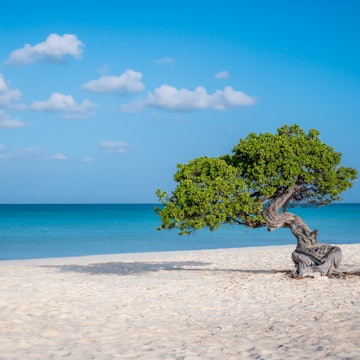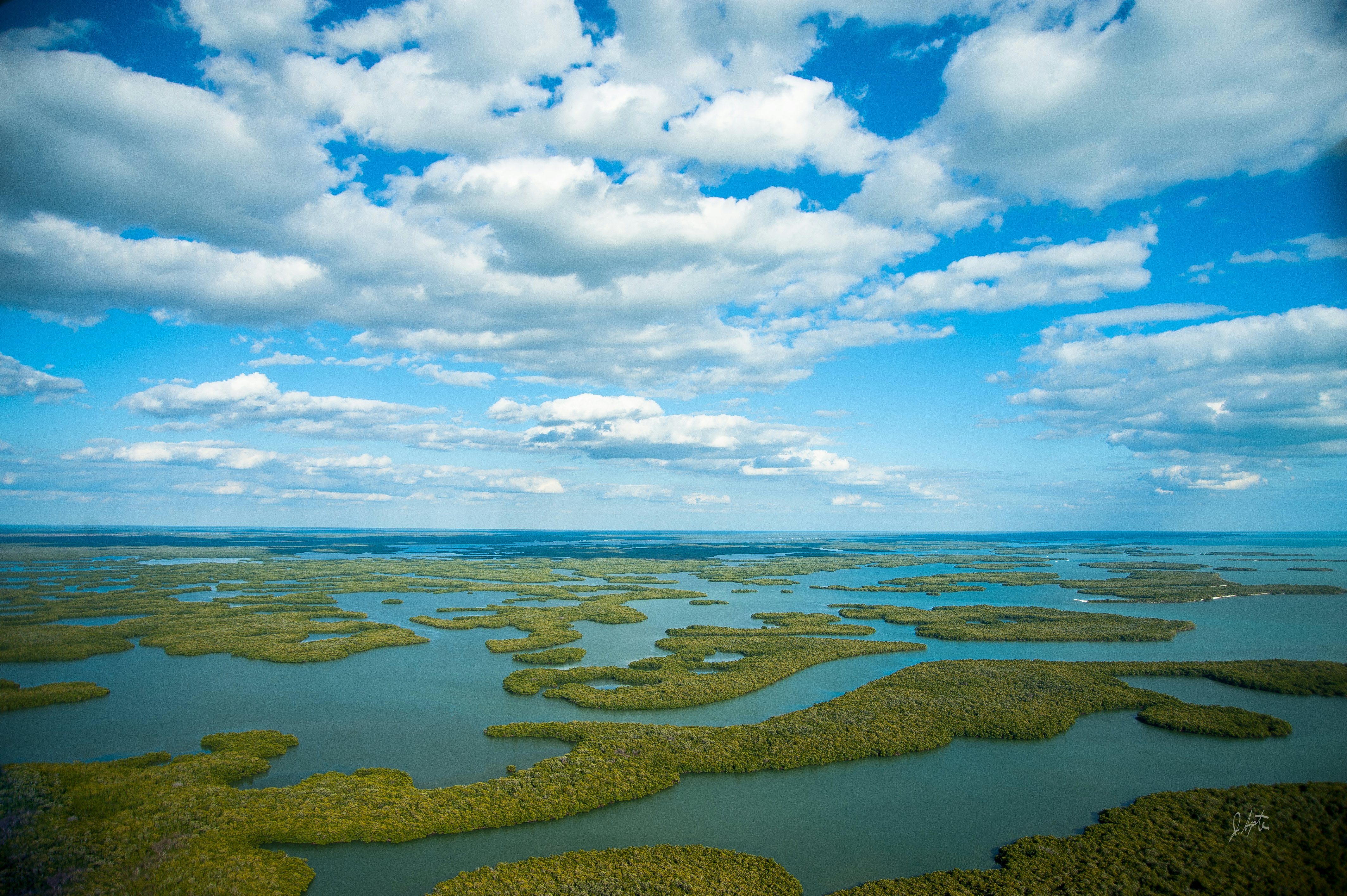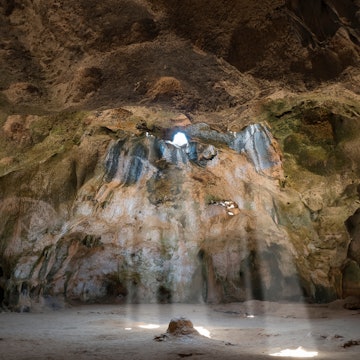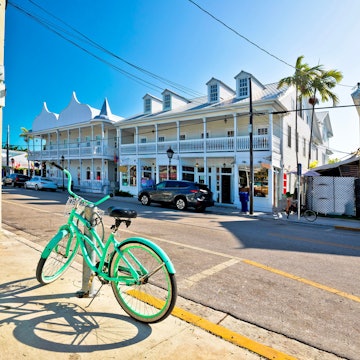

New River Gorge National Park. Zack Frank/Shutterstock
When it comes to raw, unfiltered natural beauty, the southern United States doesn’t hold back, y’all. From wild horses trotting along coastal dunes to ancient caves carved beneath Kentucky soil and rugged mountain ridges cloaked in mist, the region is oozing with iconic (and surprising) national parks. It’s a place where Civil War battlefields meet tropical coral reefs, and dense hardwood forests lead to stargazing expanses.
Visitation to southern US national parks is booming – and for good reason. More travelers are craving slower, outdoorsy escapes and with the region’s year-round mild climate, diverse ecosystems and easy access from major metro areas, these parks deliver in spades. Here are 14 of the best national parks to explore in the South, each offering something truly one-of-a-kind.
Due to staffing cuts, the National Park Service is stretched this year. Travelers can expect longer wait times, fewer services and the potential closures of certain areas. Stay prepared with this guide.

1. Assateague Island National Seashore, Maryland & Virginia
Best for wild horse sightings
A barrier island shaped daily by wind and wave, Assateague is the untamed Atlantic at its most photogenic. It’s known for its roaming bands of wild horses, believed to be descendants of shipwrecked Spanish mustangs. Visitors can walk the wide-open beaches, kayak through salt marshes or explore the Over-Sand Vehicle zone (OSV, as it’s locally known) for a thrilling beach drive – just make sure your permit is properly affixed and you’ve brushed up on the regulations. Bring binoculars, because wild ponies aren’t the only leading characters here – migratory birds, dolphins, and even ghost crabs can make appearances.
2. Mammoth Cave National Park, Kentucky
Best for exploring the world’s longest-known cave system
Deep beneath the hills of south-central Kentucky lies a dark and dazzling underworld. Mammoth Cave, a UNESCO World Heritage Site, boasts more than 400 miles (643km) of mapped passageways, making it the world’s longest-known cave system. The network has seen everything from Native American exploration to (fun fact!) tuberculosis patients seeking subterranean healing. Above ground, the park’s 52,000 acres offer hiking, horseback riding and paddling opportunities. But to truly experience the mystique of Mammoth, book a guided cave tour well in advance – these tend to sell out quickly, especially during peak seasons.
3. Great Smoky Mountains National Park, North Carolina and Tennessee
Best for hiking
America’s most visited national park has earned its stripes with mist-covered peaks, wildflower-strewn meadows and 800-plus miles (more than 1287km) of trails. Whether you're up for a soul-cleansing trek to Kuwohi (formerly Clingmans Dome) or a casual wildlife-spotting drive through Cades Cove, the Smokies serve up drama in every direction. Spring blooms, summer greens, autumnal fireworks and snowy winter vistas – every season has its own flair here. Want to see elk, black bears or wild turkeys? Hit Cataloochee or Cades Cove early in the morning or near dusk for your best chance.

4. Congaree National Park, South Carolina
Best for long-distance paddling
Congaree might not have towering peaks, but it more than compensates with mystical swamplands and ancient hardwood forests. Home to some of the tallest trees in the eastern US, this national park is a haven for paddlers, birders and anyone who appreciates a good dose of biodiversity. The 15-mile (24.14km) Cedar Creek Canoe Trail is the marquee adventure – snaking through lush floodplains and offering a front-row seat to turtles, otters and barred owls. Canoe or kayak rentals are available nearby, and guided paddle tours only deepen the experience.
5. Fort Sumter and Fort Moultrie National Historical Park, South Carolina
Best for a quick day trip
Charleston’s harbor is where the first shots of the Civil War rang out and you can relive that moment at Fort Sumter, only accessible by boat. The site offers ranger-led talks and sweeping views of the city skyline and Atlantic waters. Back on Sullivan’s Island, Fort Moultrie presents a broader look at 171 years of coastal defense history, from the Revolutionary War through World War II. Seasonal living history programs and interpretive exhibits round out the educational (and picturesque) experience.
6. Kennesaw Mountain National Battlefield Park, Georgia
Best for Civil War history
A short drive from Atlanta, this battlefield park preserves the memory of the pivotal 1864 Battle of Kennesaw Mountain. Watch a cinematic masterpiece of an introductory film (Kennesaw: One Last Mountain), then set off on trails that weave through trenches and over ridgelines where Union and Confederate forces once clashed. Living history events – complete with musket fire and reenactors – periodically breathe new life into this historic site. It’s a moving experience for history lovers and casual hikers alike.

7. Everglades National Park, Florida
Best for alligator spotting
Florida’s Everglades are really like nowhere else on Earth – a sprawling “river of grass” teeming with sawgrass marshes, mangrove forests and toothy reptiles galore. Wildlife lovers will rejoice at the birding and alligator watching, especially along Shark Valley’s 15-mile (24km) loop road (rent a bike or hop on the tram). Adventurous souls can go deeper: backcountry chickee camping (a raised platform above water), kayaking through mangroves and even stargazing in designated dark sky areas are on the table.

8. Dry Tortugas National Park, Florida
Best for overnight adventures
Accessible only by boat or seaplane from Key West, Dry Tortugas feels like a national park on another planet. Its centerpiece, 19th-century Fort Jefferson, sits surrounded by turquoise waters and vibrant coral reefs. Snorkeling is a must, but those who spend the night get the real magic: starlit skies, crashing waves and a Robinson Crusoe-like solitude. Primitive camping requires advance permits and packing in everything – yes, everything.
9. Biscayne National Park, Florida
Best for water adventures
Just beyond Miami’s skyline lies a tropical paradise few travelers know exists. Biscayne National Park is 95% water, with snorkeling, scuba diving, boating and paddleboarding all part of the adventure. Beneath the surface are shipwrecks and colorful reef systems, while on land, Boca Chita Key offers a charming lighthouse and picnic-perfect grounds. History buffs can trace human presence back 10,000 years – from the Tequesta people to pineapple farmers and presidents who fished this park’s waters.

10. Big Bend National Park, Texas
Best for stargazing
In the remote reaches of West Texas, Big Bend offers a cinematic landscape of desert cliffs, winding rivers and star-drenched skies. As a designated International Dark Sky Park, it’s one of the best places in the US for stargazing. Take on the moderate Boquillas Canyon Trail for epic river views or hit the high-clearance backroads (with caution) to really get off the grid. Don’t forget water, a spare tire and your sense of adventure.
11. Guadalupe Mountains National Park, Texas
Best for surprisingly diverse landscapes
Guadalupe Mountains National Park is home to the highest point in Texas – Guadalupe Peak – and a geological treasure trove of ancient reef fossils. It’s an under-the-radar spot for serious hikers and geology nerds alike, offering everything from desert expanses to lush mountain forests. The 8.4-mile (13.5km) round-trip hike to Guadalupe Peak is strenuous but rewarding, with switchbacks that reveal changing ecosystems and jaw-dropping summit views.

12. Shenandoah National Park, Virginia
Best for a scenic drive
A quick escape (75 miles or 120.7km) from the nation’s capital, Shenandoah National Park stretches along Virginia’s Blue Ridge Mountains with 200,000 acres of tranquil forests and panoramic viewpoints. The showstopper here is Skyline Drive: a 105-mile (168.9km) ribbon of road that winds its way through the park's highest ridgelines, ideal for fall foliage and Sunday drives. While the drive is a bucket-list item, hikers can tap into more than 500 miles (804.6km) of trails – including a section of the famed Appalachian Trail – and waterfall lovers will be spoiled with stunners like Dark Hollow Falls and Whiteoak Canyon.

13. Hot Springs National Park, Arkansas
Best for soaking in thermal springs
Hot Springs combines natural beauty with old-school charm. In the heart of downtown Hot Springs, Bathhouse Row features ornate early-20th-century architecture and spa experiences steeped in history. The thermal waters are piped into facilities like the Quapaw Bathhouse, where guests can indulge in modern wellness treatments with an old-world twist. Don’t leave without a stroll through the Fordyce Bathhouse Museum or a hike into the surrounding Ouachita Mountains for serene forest views.
14. New River Gorge National Park, West Virginia
Best for rugged landscapes
As the newest addition to the national park system, New River Gorge is already turning heads with its dramatic cliffs, thundering whitewater and world-class rock climbing. The Appalachian biodiversity here is off the charts, with rare bats, birds and river critters calling the gorge home. Whitewater rafting on the New and Gauley Rivers is the stuff of adrenaline-fueled dreams, but hiking trails like Long Point and Endless Wall also deliver with forest views.
















